Big Trip 2024 our Bonus destination -Mexico!!
- Anne B 10milesfrom

- Mar 17, 2024
- 8 min read
Updated: Mar 18, 2024

So, our next key point was Miami in 4 days time. When organising this trip, I had planned to hire a car and drive from New Orleans to Miami, visiting, among other things, 2 museums on the way. Then I discovered that the cost of the one way car rental was huge, and the museums haven't reopened yet after last year's hurricane damage. Another plan needed. A quick look at the map revealed another route to Miami, and it was a cheaper alternative! So, 2 cheap flights and accommodation were booked.... in Mexico! The flight from New Orleans took just 2 hours, and we headed for our small hotel in downtown Cancun, not on the coastal strip, which was double the cost. It was lovely and run by a charming family, and had some rather beautiful graffiti walls!
Mexico has a rather iffy reputation, but we loved it, and so many people said "Thank you for coming to Mexico", and were keen to tell us that it is a great country. Now as you may have gathered by now, Chris and I are not sit on the beach people, but we love to look at it , so we caught the local bus out to the hotel zone. Cost 50p for a 30 minute journey. The bus was packed! We got off at the Mayan museum, as our goal was to learn as much about the history as possible.
This promontory of Mexico is called Yucatan and is dense jungle, and quite sparsely populated. Cancun is by far the biggest place, and it was artificially created 55 years ago. So who else lives here? Chris and I had heard of the Incas and Aztecs, great civilisations that died out long ago. We had assumed the same was true of the Maya but that is definitely not the case. Many still live in small villages hidden away in the forested jungle across parts of modern-day countries of Guatemala, Mexico, Belize, Honduras, Nicaragua, and El Salvador. Others have integrated into modern town and city life. The Mexican government barely recognises them, and so there are not always written records, and estimates of their numbers, which range between 1 and 1.5 million in Mexico, and up to 8 million across central America. They traditionally worshipped many gods and mythical creatures, and believed in animism...objects, places and creatures have a soul.
The museum is adjacent to a series of Mayan ruins from around 900AD, and completely surrounded by the continuous coastal strip of huge hotels and resorts, backed by a vast lagoon. Some hotels echo the design of the temple's! Oh and the lizards are quite big too!
The museum contains a history of the Mayan people, and many artefacts recovered from the excavations of Mayan temples in Yucutan.
We particularly liked this skeleton of a sabre toothed tiger!

The Maya are believed to be migrants from South America around 4000BC . Their peak time for development and progress was between 250 and 900AD when many temples were built! Their economy was heavily based on farming, and their decline was possibly due to severe weather - flooding and droughts, and finalised by the invasion of the Spanish in the early 1500s. Our goal was to see as much as possible in our short stay!
After the museum we walked to the ruins, and then headed 20 minutes along the road to one of the few public beaches. Our first glimpse of the sea was astonishing.

Our favourite place anywhere is the the Isles of Scilly which has gorgeous beaches. The sea colours and beaches near Esperance in SW Australia were stunning, but the hues of blue here were incredible, and we could see why it is is so popular for beach lovers. Just wow!
We then caught the local bus back to the new Port and had an excellent meal in the traditional Gran Puerto marina mariscos restaurant!
A final local bus back to our hotel and an early night as our booked day trip was leaving from a different hotel at 5.50 am! So, an early start, which saw me and Chris, who was a bit unsure about coming to Mexico, walking through the backstreets of downtown Cancun at 5 20 am!! And we were fine.. although some of the little clubs were still open and slightly the worse for wear partygoers were mixing with people heading for work. Anyway, the security seemed pretty tight!!

Our trip was an epic 14 hour day out into the more remote parts of the Yucatan peninsula. The first stop was Valladolid, a former regional capital with some classic Spanish Mexican architecture.
Founded in1543 on the site of Zaco, an old Maya city, some of the buildings use maya stones in their architecture. The central square contains pretty gardens, and the church of San Servacio which was rebuilt in 1709 after being partly demolished by the then Governor who believed it had been irreparably desecrated! He ordered it rebuilt with the altar facing NW to Rome.
The old cityhall was built in the 16th century and is still in use today. Many houses have big indoor courtyards. The city's greatest claim to fame was when the Mexican revolution started here in 1910, and earned them their coat of arms.
Next onto a traditional Cenote. A cenote is a freshwater pool in a collapsed limestone cavern. These were the Mayas main source of fresh water, and also caves were the entrance to the underworld, so they were considered sacred. There are thought to be as many as 7000 in
Yucatan, but only 142 can be visited. Many are undiscovered.

Here we were greeted by local Maya tribesmen who performed a greeting ceremony and blessed us all using their cleansed water and herbs. They also showed us black obsidian discs which they used to safely observe the sun. The Maya developed a solar and astronomical calendar which comprised 3 interlocking calendars of different time frames and is still used today by rural farming communities to determine optimum dates for sowing, harvesting etc..
It was possible to swim in the cenote but we didn't fancy wet clothes for the rest of the day so we explored the village. These trees are called Green trees because the young ones have green trunks! This one is over 1000 years old. Incredibly they are hollow inside but very much still alive. Chris decided to pretended to be an angel. The flowers were beautiful and the loos very decorative in a basic way!!
Then there was the Tequila tasting! They make their own tequila here, and we tried 2 aged tequilas, and 2 flavoured ones, one Mango and one Coffee. They explained that you don't need salt and lime, and the secret is to inhale through your nose as you drink it, and breathe out as you swallow and you don't get the burn! They were delicious!
Our last stop was the big one. Chichen Itza, one of the new 7 wonders of the world, and once home to 50,000 people. This is one of the biggest and most famous cities built by the Mayan empire in Mexico. Its central pyramid, Kukulkan, is 24 metres high and an architectural and engineering marvel, erected before 900AD when Chichen Itza was the capital of the Mayan civilisation.

The pyramid reflects the Maya calendar, which they worked out through astronomy and mathematics. On each of the Spring and Autumn solstice the sun's rays form a serpent pattern on the steps of the monument.(Not my photo!)

It is perfectly aligned, and the small building on the top is aligned just a few degrees differently from the main temple to allow for leap years. If you clap rhythmically from a precise spot on the ground immediately below the temple, a sound like birds tweeting comes out of the top! Very intriguing!
The adjacent temple of the red Jaguar was recently excavated and found to be a temple within a temple, and with a pool underneath. No access allowed so these aren't my photos.
There is also a large games arena. This was used for a very interesting game a bit like volleyball, played with a 10lb rubbery ball.

The Maya are quite small in stature. They knew they would not be great soldiers, so they devised a cunning plan. Their battles involved just a few members of the tribe. The loser's could be sold into slavery or even killed with their leader. So, minimal death, and people only became a leader if they were prepared to sacrifice everything, including their life, for their tribe.
This was an incredible place to explore and so worth the trip.
Driving back we passed traditional thatched houses, craft stalls and very colourful cemeteries. Death is almost celebrated as a passing to the next stage, hence the very visible use of skulls, skeletons etc, and the famous Day of the dead celebrations!
We got back at 8pm, popped into a supermarket where the pork scratchings were about 12 inches square!
Then, somewhat shattered we walked to our hotel...and we had to get up at 4.45 am again the next day for a second tour! Back walking the streets at 5.15am and another trip, this time south to the amazing Tulum complex which was built on the cliffs around 1200AD, and was once a very significant port and the only walled Mayan city to have been found.

The doors and gates are all low and v narrow, to make entrants bow low and remain subservient.This complex has the remains of residences as well as the temple buildings. Archaeologists believe the buildings may well have been painted in bright colours. It has an amazing cubic stone in the temple of the winds, with holes in each side. When the wind switches to certain directions, it makes a sound like a siren... an 800 year old hurricane warning. Tulum also had remnants of wall paintings, and complex carvings, including the symbol for infinity. The Mayans dealt with zero and infinity, and a binary system in their mathematics. And some very large iguanas!
From here, we headed to another cenote for a secon Mayan blessing and a great buffet lunch.


Next was another vast Maya complex, Coba. Built earlier than Chitchen Itsa, around 600ad, this covers an area of 80km² and we were lucky to have a tribike with driver to pedal us around (The temperature was over 33°C.) Our first stop was the true pyramid temple, the only one known in Mayan remains that doesn't have a square top.
Then on to the main temple, 45 metres high. Somehow this was more atmospheric than Chichen Itza which we weren't expecting.

The biggest area of buildings contains La Iglesia temple which had vultures nesting on it. There was also an excellent example of a Juego de perlotta court with the hoops intact. This amazing bird is a type of turkey.. the orange lumps around it's eyes are part of it's allure!!
There were 21 tall stones discovered here, with writing on, telling the story of the temple. It was the hub of the Maya civilisation, and roads fan out from here in all directions. This temple was surrounded by 7 lakes, which provided fresh water. As we drove away, the guide gasped and said that there was somebody out on the lake with a kayak. "It is full of alligators" was her comment!!
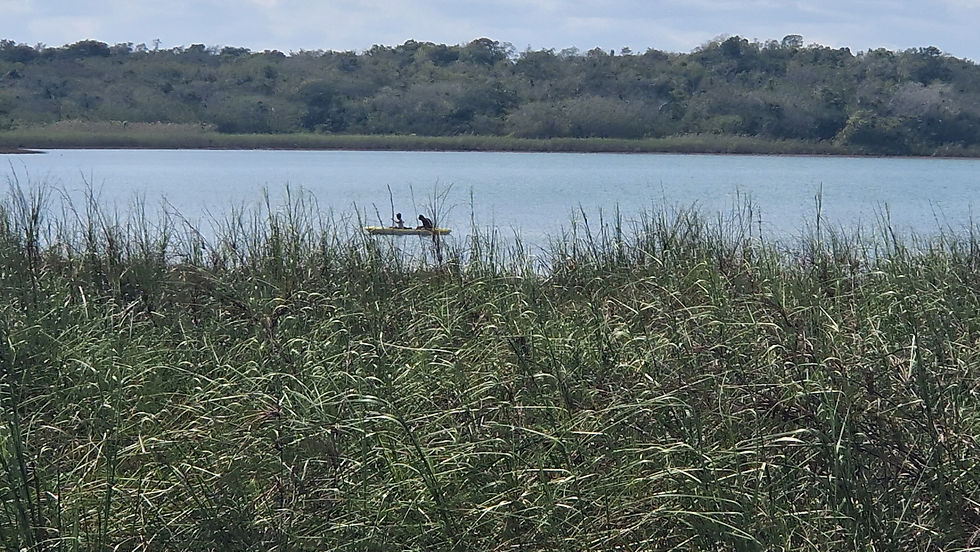
Our final stop was Puerto Carmen, another purpose built seaside town with a very definite party vibe! We arrived just after a torrential rainstorm, and found a rather busy beach with 2 restaurants both playing very loud music, but the sea colour was still gorgeous and I finally got a paddle in the Gulf of Mexico. And some ice cream, but we declined the fish pedicure!
Speaking of the Gulf of Mexico, have you ever noticed how round it looks on a map. Apparently that is because that was created when the huge meteor that caused the ice age and wiped out the dinosaurs, crashed to earth! Another late return to the hotel, and we certainly feel we have seen and learned as much as we could of this part of Mexico! Here are a few last random pictures. Can you spot the Iguana?


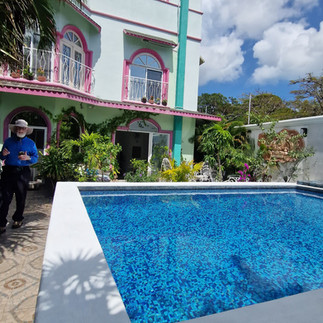

















































































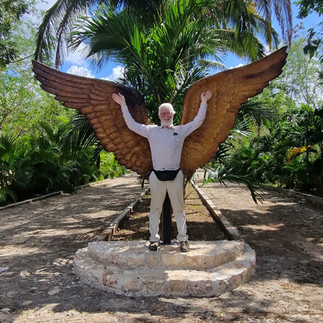


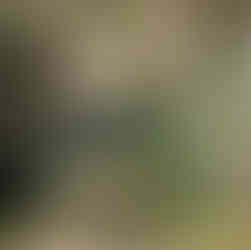

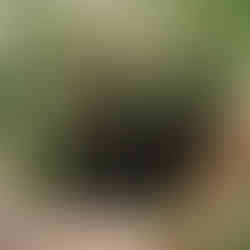










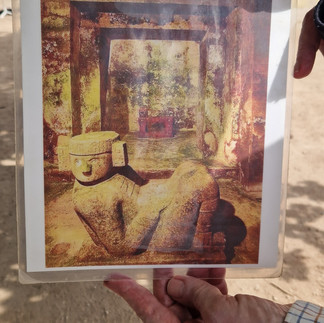




















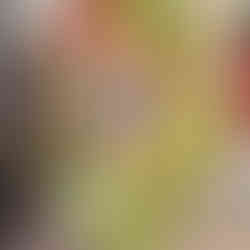

































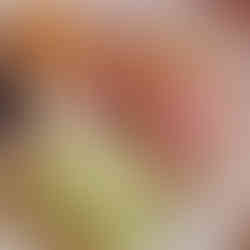











































Comments